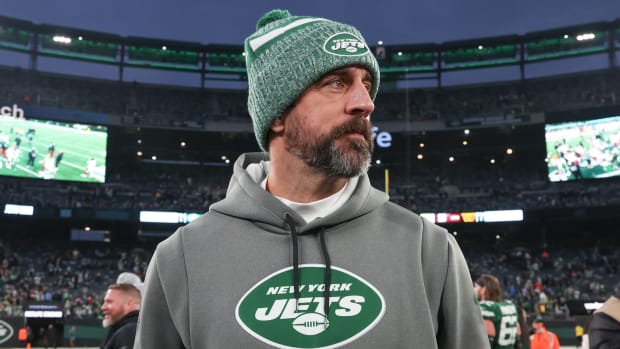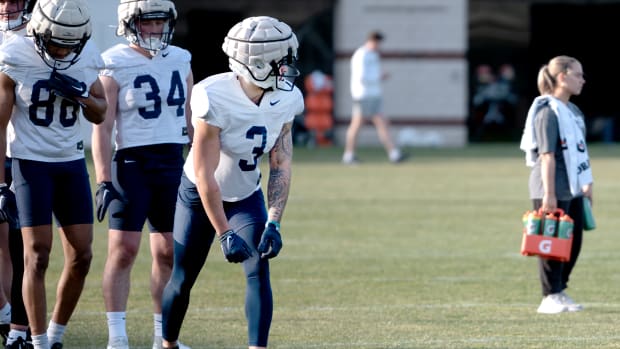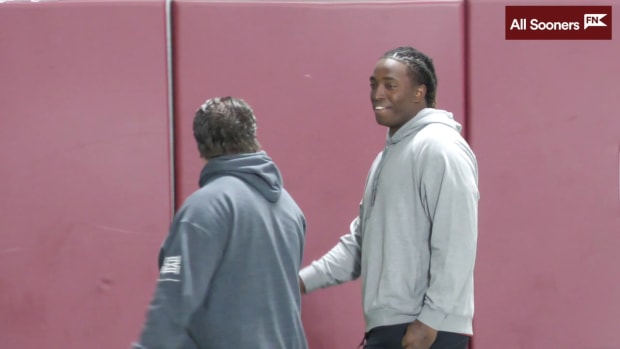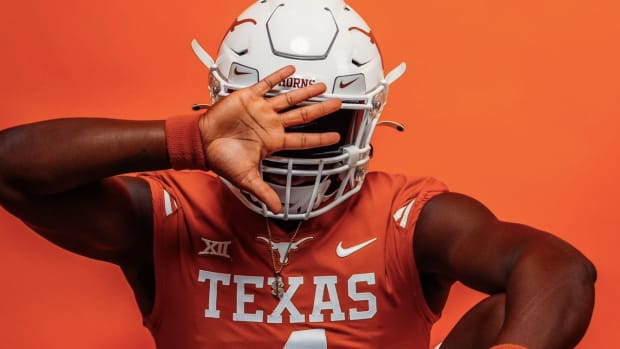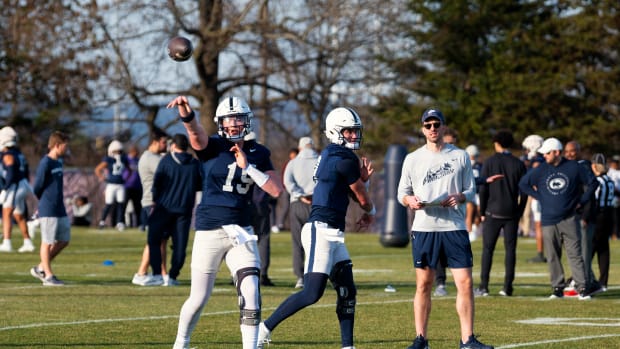What Will It Take for a College Football Game to Be Postponed?
Before the Pac-12 decided against playing a fall football season, conference medical experts and administrators began exploring the tricky issue of developing policies for in-season interruptions.
How many COVID-19-related cases make a team ineligible to play?
What exactly determines a no-contest or a postponement?
Who has the final say on these decisions?
“It becomes a very difficult calculation,” says Doug Aukerman, Oregon State’s team doctor and the chair of the Pac-12 medical advisory board who was part of the discussions. “You have to think about a lot of different pieces.”
Week 1 of college football—at least the FBS version—has arrived without many real answers to those pressing questions. In just three days, Southern Miss hosts South Alabama and Central Arkansas plays UAB to kick off what is sure to be the most bizarre football season in modern American history.
College athletic leaders are bracing themselves for game interruptions connected to team-wide viral outbreaks. The season has yet to start, and already three scheduled openers have been delayed because of COVID-19 clusters. UL-Monroe, with nine new positive cases, moved its season opener against Troy to December. NC State and East Carolina, both recently having paused workouts for COVID-19 issues, pushed back openers against Virginia Tech and Marshall, respectively.
Even the SEC isn’t exempt. Auburn has missed multiple days of practice for COVID-19-related issues, and Tennessee took off a day for “a few” positive cases. Last week, LSU and Oklahoma endured significant losses at position groups because of quarantine protocols. OU was down to one player at an unnamed position, and LSU practiced with just four offensive linemen.
What if this happens during the season?
“That’s a hard one,” answers South Carolina athletic director Ray Tanner. “That decision will have to be made in the coming week.”
It’s crunch time for these determinations. No longer months away from a season opener, conferences are mere weeks and days from kickoff. But no league has announced criteria for game postponements or cancellations.
However, in the Big 12 at least, the issue is in the last stages of finalization. Athletic directors are smoothing out plans recommended to them by the conference’s coaches, says commissioner Bob Bowlsby. While nothing is final yet, conference leaders are moving toward approving a policy requiring a team to have a designated number of healthy, eligible players at each position and overall as a team—a model that could be adopted across all leagues. The SEC is exploring a similar policy.
“It’s an ongoing conversation,” Bowlsby says. “It’s got a lot of moving parts.”
One of the more favored options would mandate that a team have at least 53 total players available to play, with a minimum number at each position. The positional standards may include such requirements as one quarterback, six offensive linemen, six defensive linemen, two or three receivers and so on. Decision-makers have somewhat settled on the 53-man number based on data. The average college football team uses between 45 and 65 players per game.
One of the debates raging among administrators: Does the number include walk-ons? Teams are allowed to use 85 scholarships a year, though many programs do not fill that allotment, while having as many as 35 walk-ons. West Virginia athletic director Shane Lyons believes walk-ons should be included in the calculations of available players.
“Some of our walk-ons, they can play,” he says. “If they’re on your roster and are practicing, they’re part of your depth chart. We’re just trying to get through the season. Yes, somebody may not be putting the best 53 on the field.”
But what about those who are injured? Though there is disagreement, those players are not part of a realistic available roster. In-game injuries could pose a real problem and potentially suspend a game midway through. What happens if a team’s only quarterback is knocked out in the second quarter ? What if two of the six offensive linemen suffer in-game injuries? “You don’t want someone’s tight end playing quarterback,” Lyons says.
Aside from safety, the top concern among college leaders is gamesmanship among coaches. Will they manipulate numbers in order to play or not to play? Will they influence contact tracing or mandatory quarantine times?
The process of determining whether a team isn’t or is eligible to play a game will run through the conference office. Each athletic director will report their team’s COVID-19-related numbers, maybe a day before the game, and the conference commissioner—potentially with guidance from a medical advisory board—will determine a course of action: play the game or suspend it indefinitely, before ultimately rescheduling it or ruling it as a no-contest.
Texas athletic director Chris Del Conte feels the Big 12 has built in enough open weekends—three—to have flexibility for postponements. “We know there will be situations like this that will pop up,” he says. Other conferences have similar scheduling formats. The SEC is starting later than any league, Sept. 26, so it has the least flexibility (a bye week plus an open weekend on Dec. 12).
Lyons believes that a “forfeit” will not enter the discussion. Lyons, the chair of the NCAA Football Oversight Committee, has long explored this issue. Before conferences began to move to conference-only schedules, the committee examined options for universal in-season interruption protocols. They had discussed ruling teams ineligible if they were without 20–25% of their roster for COVID-19-related issues. The decisions is now left up to the conferences.
Todd Berry, the executive director of the American Football Coaches Association and also a member of the oversight committee, believes that a numerical requirement has its flaws. He has a solution: use common sense. “How can you put any solid numbers on it?” he asks. “It’s going to come down to the conference and ADs coming together and using just good common sense. Trying to come up with a number. … Every time we did that (on the committee) there was a problem with it.”
But without a more specific standardized policy, coaches may have too much wiggle room. Discussions among coaches have centered more on “who” is out rather than “how many” are out. If 20 players are quarantined and 18 of them are backups, coaches are willing to play a game. If eight players are quarantined and seven of them are starters, well, that might be a different story.
Earlier this summer, South Carolina coach Will Muschamp said he could play with 55 players, presumably referring only to those on scholarship. His boss, Tanner, says that the SEC is in the process of determining protocols. Like the Big 12 did, he believes coaches are the most “qualified” group to recommend proposals.
Tory Lindley, president of the National Athletic Trainers Association, believes that the relationship between a coach and his athletic trainer is more important than ever. They must work together in situations such as this. He has confidence that will happen and is already happening among those teams planning to play this fall.
“One thing I can absolutely say, coaches and ATs in college football never fall short on advance planning and don’t leave a stone unturned,” he says. “They’re preparing for this.”
Safety is of paramount concern, especially if young players—maybe even walk-ons—are thrust into starting roles to replace those in quarantine. Already, many teams are down in numbers. Nearly 100 FBS players have opted out, and injuries are a normal occurrence in such a collision-filled sport.
“You know the saying, ‘You’re one injury away from playing.’ Now it’s also, ‘You’re one bad cough away from playing,’” Arizona State coach Herm Edwards says.
Edwards estimates that he has 60 players he’d be comfortable in playing for the duration of a game. And that’s a high estimate, he adds. For those planning to play this fall, he questions the product of the game, as well as the safety of players. “You may be playing with 11, but how’s it going to look? When you do that, are you exposing players not capable of playing at that level for that many plays?” he asks. “Starters are starters for a reason.”
While coaches in other leagues are working toward playing this fall, Edwards and his Pac-12 brethren watch from afar. He hopes other leagues hold successful seasons, potentially paving the way for his own league to host an uninterrupted winter or spring season.
Meanwhile, Pac-12 medical experts continue monitoring virus case numbers and testing advancements. Soon, they’ll have to reengage the tricky issue of developing policies for in-season interruptions.
“We paused on that,” Aukerman says, “but we’ll have to rediscuss it at some point.”

